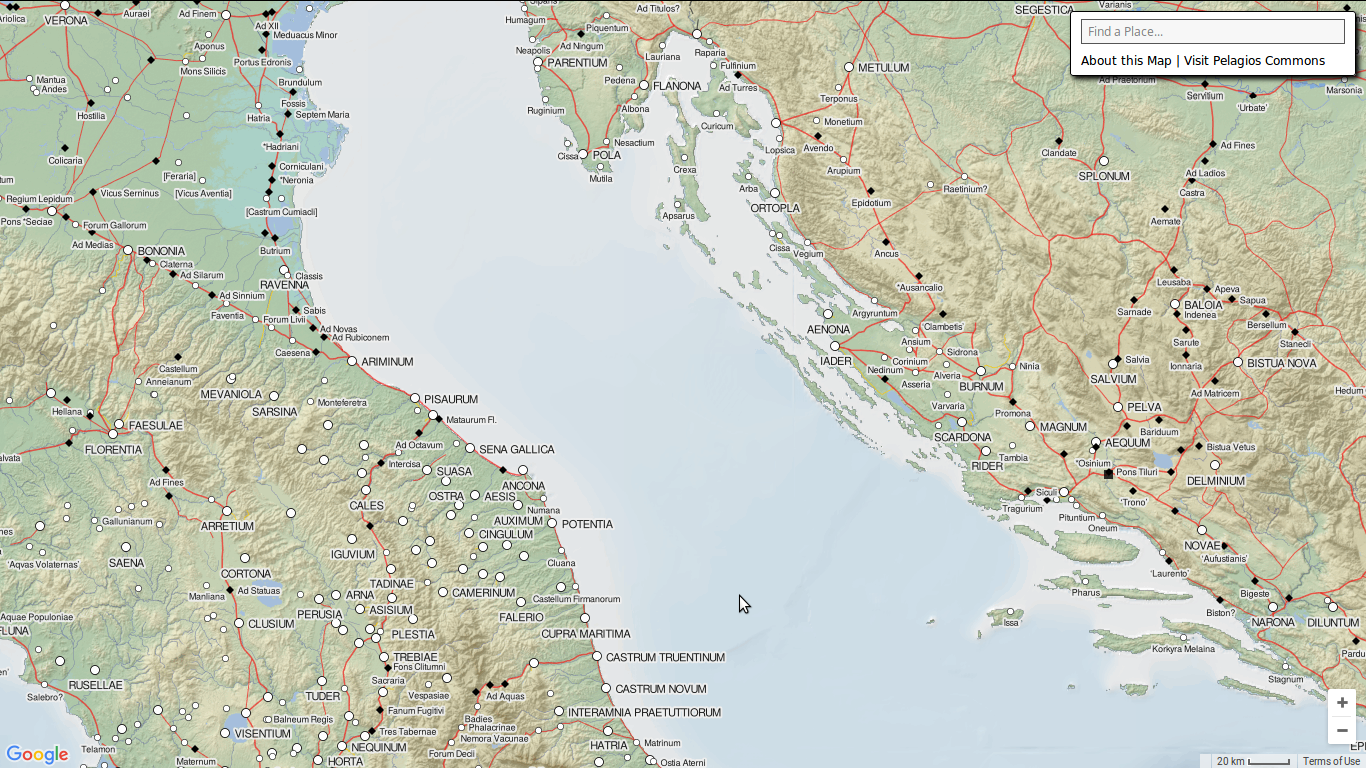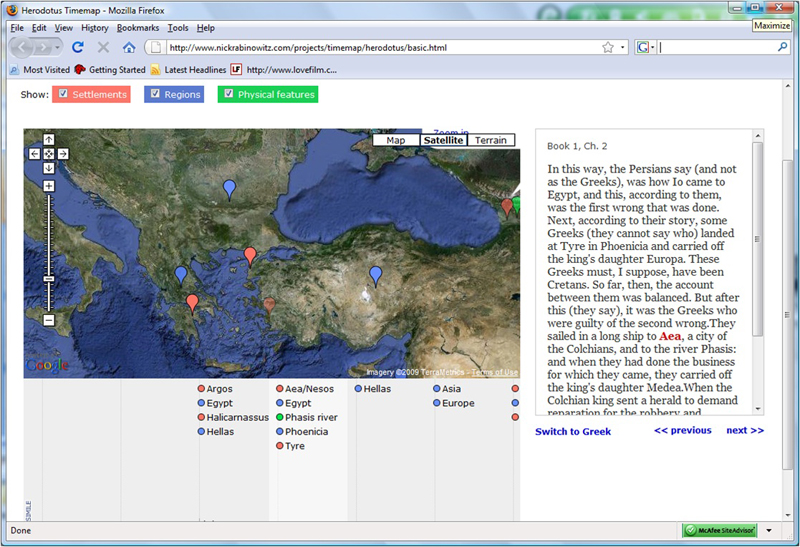Semantics of place names
in some Renaissance Latin texts
Nikola Modruški, Jakov Bunić, Marko Marulić, Ludovik Crijević Tuberon, Ilija Crijević
Neven Jovanović / neven.jovanovic@ffzg.hr
University of Zagreb
Zadar, 7-8 April 2017
This page: croala.ffzg.unizg.hr/croala-index-locorum-zadar/
Repository: github.com/nevenjovanovic/croala-pelagios
The Plan
Research: what and why?
Texts: which?
Expectations
Results
What is a place name? In a Latin text?
Where next?
What and why?

Pelagios Commons provides online resources and a community forum for using open data methods to link and explore historical places
CroALa index locorum: a gazetteer of place names in Croatian Latin texts; Pelagios Resource Development Grant, 2016
Reading for places


This is actually a comment!
Reader's knowledge (or hypothesis) connected to a passage of text

croala.ffzg.unizg.hr/basex/cite/urn:cite:croala:loci.ana1068750
The texts
History: Crijević Tubero, Commentarii de temporibus suis,
c. 1525
Epic: Bunić, De raptu Cerberi, c. 1490
Oratory: Nikola Modruški, Funerary oration for Cardinal P. Riario, 1474
Poetry: Marulić, Carmina (c. 1500) and
Crijević, Carmina (c. 1500)
Expectations
Reading for places is reading against the grain of a text
Approaching the unknown from the known
For example, Rome in Marulić and in Crijević
Simplex munditiis?
Results
We have set out to annotate place names in selected Croatian Latin texts from the Renaissance. We have qualified the placeness of place names, described their linguistic form, linked the words to things (actual or imaginary places), and located the things in time (again actual or imaginary). We were able to put it all together ("linked data").
Statistics
14,521 annotations
388 identified places
1468 mentions of places
Annotations
Lexical
Morphological
Toponymical
Temporal
Qualifying (is this a place name?)
Digital annotations, each of them brief, simple, and almost without the usual scholarly prose, thus become a more structured and more manipulable (searchable, analysable) scholarly commentary.
Its real complexity appears when we start to examine connections of these simple, atomic annotations in their molecular configurations.
What is a place name?
(in a Latin text?)
A place in time
Theory
Geographical
Cultural
Cultural place changes over time
Practice
Rome: croala.ffzg.unizg.hr/basex/cite/urn:cite:croala:loci.locid05214
Fact / fiction
Achelous river
urn:cite:croala:loci:locid38525
Fiction / fact
Acheron
Multi-word place names
Place names consisting of several words
Vallis Surda = Nečujam, Croatia
www.wikidata.org/wiki/Q1878124
Alba Regia = Székesfehérvár, Hungary www.wikidata.org/wiki/Q130212
Qualified place names
Lybicum mare, Tragurina urbs
An adjective derived from a place name and a noun describing some sort of geographical entity (tellus, lacus, vertex), of man-made place (oppidum, urbs) or a more general spatial notion (orbis, regio).
Question: is it significant that a text does not speak simply of "Tragurium", but of "Tragurina urbs" -- though both expressions, of course, point to the same actual place?
Connotations of places
Stygius canis, Thebanae sorores
Obviously, these are not place names - but we cannot overlook the fact that the adjective here connotes a place.
In our categorization, this is a complex use which should be investigated further.
Ambiguities
Different combinations
of annotated features
open questions
What does it mean that, in various segments of the collection, the same place appears in combination with different periods?
That the same place appears in combination with different lemmata?
Do combinations suggest something
about texts
or
about places?
Are there
regularities
behind combinations?
What next?
Revision: do we all annotate the same?
Completion: have we annotated all that is there?
Verification: can our findings be applied to other
texts, genres, periods?
Generalisation?